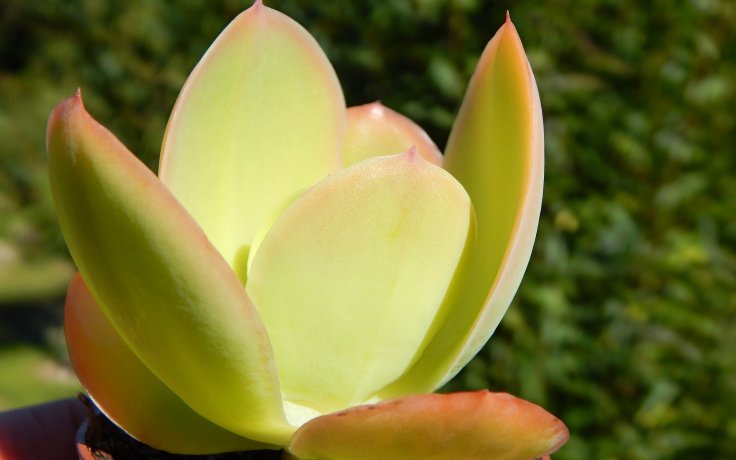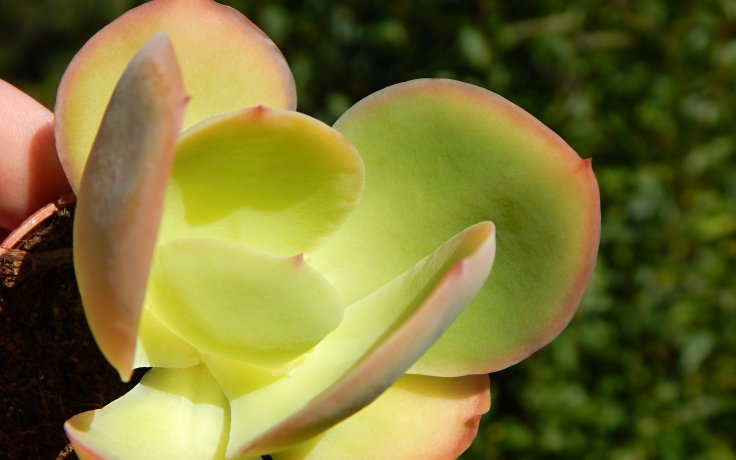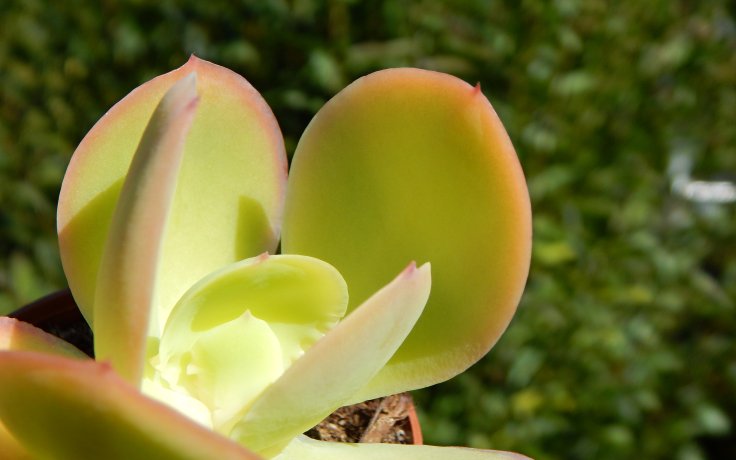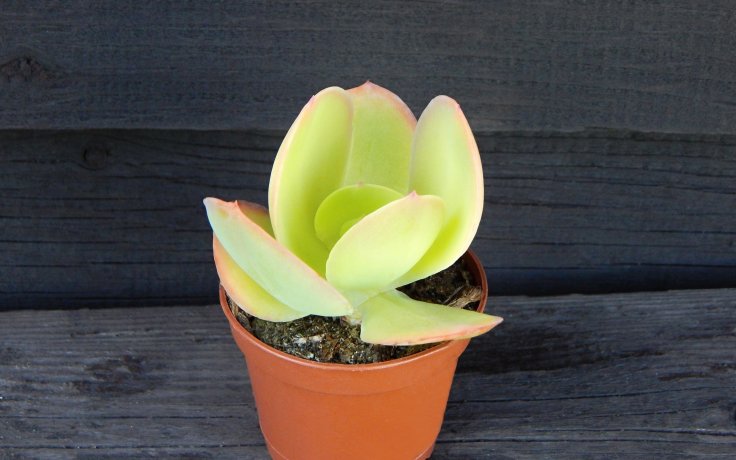- Home
- Succulents
- Echeveria
- Echeveria pallida





Echeveria pallida
Place the plant ideally in a sunny location.
Always water a few days after the substrate has dried out. In winter, limit watering.
It can tolerate -3.9 °C in the short term. However, the plant is not hardy.
The epithet pallida is derived from the Latin pallidus - light, pale. It refers to the light, yellow-green colour of the leaves.
Echeveria pallida is sometimes referred to as Argentine Echeveria. This name is somewhat confusing, however, as the plant is native to Mexico, not Argentina. Echeveria pallida is closely related to Echeveria gibbiflora and Echeveria gigantea. It is not commonly found in the wild in Mexico, hence the speculation of a hybrid origin. However, a 2002 study contradicts this hypothesis.
The lime-green leaves are spoon-shaped and grow up to 15 cm long and 9 cm wide. The edges of the leaves are tinged with reddish hues. The plant forms large rosettes growing at the top of the stem. At first it grows solitary, later forming numerous offsets forming large clumps. The stems reach a height of up to 15 cm and a diameter of up to 1,5 cm.
Scarlet to pink flowers appear in winter. They grow on inflorescences up to 90 cm high.
Echeveria do not need to be fertilised. In sunlight, it turns a beautiful shade of orange and red from the edges, giving the lush green leaves a fresh look.